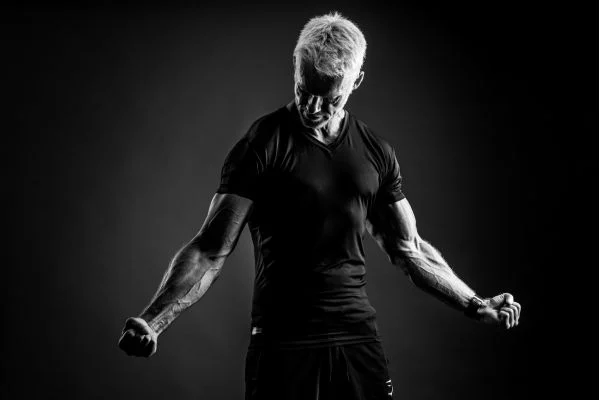The Motivation Behind Step Tracking
FitBits, or an activity tracker by any other name, are great motivators because, as the term states, they track your activity – and what gets measured improves.
My wife enjoys competing in challenges with her friends for the most steps. In fact, many evenings before going to bed, she may be seen walking in place just to get that little edge on the competition.
But it’s not just about competition. That community factor is proving to be one of the greatest motivators to keep people active with their fitness goals.
The Problem with What’s Measured
However, there remain major drawbacks to these devices that have yet to be corrected. One of the biggest is that they cannot track the volume of work accomplished.
For example, they can measure the number of steps my wife takes into the mall, but not the amount of work she does walking the same number of steps out of the mall carrying 50 lbs of treasure.
Aerobic vs Anaerobic: Not All Steps Are Equal
When it comes to fitness, this is actually a big deal.
A brisk walk is an aerobic activity.
A slower walk while burdened with a load is an anaerobic activity.
Aerobic activity increases heart rate and caloric expenditure. This is great for heart health and is often marketed as the answer to weight loss. But here’s the catch: burning calories is a double-edged sword.
- Pros: Calories burned come mostly from stored fat.
- Cons: Some also come from muscle, which decreases metabolism.
This problem gets worse if someone is combining increased calorie burn with decreased calorie intake – a topic for another article, perhaps.
The Weight Loss Trap
At first, the results of aerobic training show up as a welcomed drop in overall body weight. But over time, muscle loss leads to a metabolic slowdown. That means your body becomes worse at using calories efficiently.
The result? The dreaded plateau at best – or sickness, burnout, injury, and even a damaged metabolism at worst.
If you’ve ever seen someone who lost weight but is now skinny, flabby, and sickly, you’ve seen a classic case.
Why Anaerobic Activity Matters More
On the flip side, anaerobic activity builds muscle, which increases your metabolism and helps your body burn calories more efficiently over time.
If fitness trackers were as good at encouraging anaerobic activity as they are with aerobic, they might actually be onto something.
(Of course, that might lead to my wife buying more treasures at the mall – but at least she’d be getting fitter in the process.)
Calorie Counters Aren’t Cutting It
At present, the closest thing fitness trackers have to measuring anaerobic work is calorie counters. But:
- Calorie counts don’t equal anaerobic exercise.
- The counts are based on formulas using age, gender, height, and weight.
- They estimate active calories using algorithms and basic sensors (movement, sweat, temp, heart rate).
The problem? These methods are wildly inaccurate – but unless you want to wear a $50,000 device the size of a bowling ball, it’s the best we’ve got.
Trend Tracking is the Best They Offer
Just like step counters, calorie counters are best used to show trends. They help you notice when you’ve been sedentary or inconsistent.
But here’s the kicker: if that motivation lands you back on the treadmill just to boost your step count or calorie burn, it’s not really the motivation you need.
If instead it inspires you to lift weights or engage in muscle-building activity, then sure – it’s a worthwhile tool.
Unfortunately, this isn’t how it usually plays out.
My wife, for example, still logs her steps at night. But luckily, she’s also motivated from within to make strength training a part of her life. And that’s something you can’t program into a wearable.
A Better Way Forward
The solution – or at least a step in the right direction – is to calculate the volume of work accomplished, not just steps or calories.
That means factoring in weight moved, repetitions completed, and time spent doing it.
For example:
“10 reps of 50 kg in 45 seconds” gives you a clear idea of workout volume.
Forget the number of sets – volume over time is what matters.
This won’t prevent bad form or overtraining, but it will:
- Support the community-driven motivation model
- Help quantify workouts that support sustainable, healthy fitness goals





